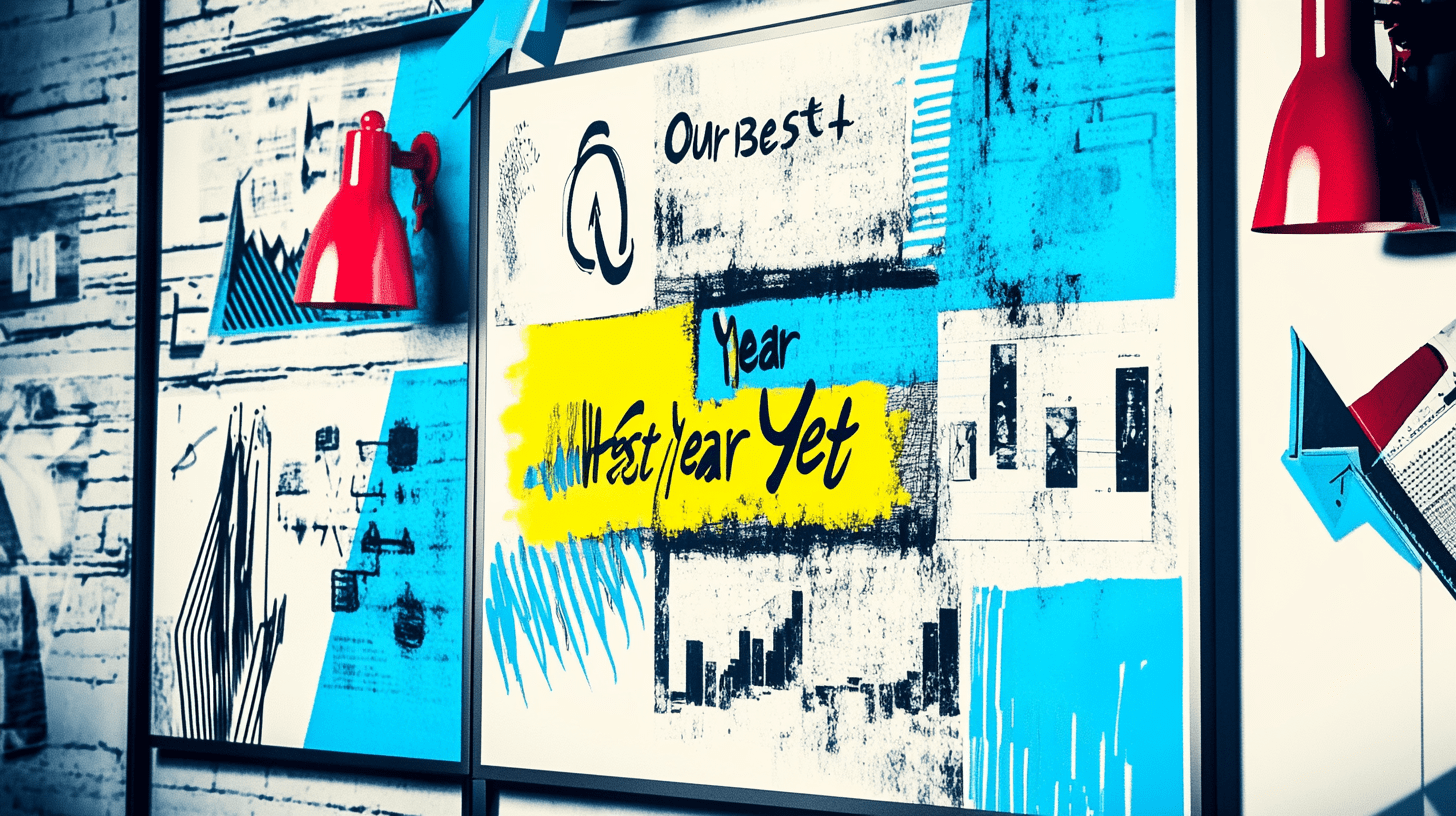Are you spending too much to get new customers? Knowing the real cost of getting a new customer is key for your business’s health and profit.
Customer Acquisition Cost (CAC) shows how well your marketing and sales work. It tells you how much you spend to get a new customer. This makes it a critical part of your business plan.
Improving CAC is more than just cutting costs. It’s about getting the most from your investment. By getting better at this, your business can grow and make more money.
Key Takeaways
- Understanding CAC is key to knowing your business’s health.
- Improving Customer Acquisition Cost can lead to better ROI.
- Good CAC management means finding the right balance between marketing and sales costs.
- Lowering CAC can boost profits without slowing down growth.
- Keeping an eye on CAC helps make smart business choices based on data.
Understanding Customer Acquisition Cost (CAC)
Customer Acquisition Cost (CAC) is key for businesses to grow and stay profitable. It’s the total cost to get a new customer, including marketing and sales costs.
To get CAC, you need to know what it includes. CAC covers marketing costs, sales team salaries, and other expenses for new customers. You calculate it by adding up all costs and dividing by the number of new customers.
Definition and Calculation
Knowing how to calculate CAC is important. Businesses must track all costs to find their CAC.
Importance in Business Strategy
Understanding CAC is critical for businesses. A lower CAC means you’re better at getting customers, which can make you more profitable. It helps businesses check their marketing and make smart investment choices.
| Component | Description | Example Costs |
|---|---|---|
| Marketing Expenses | Costs for promoting the product or service. | Social media ads, Google Ads, event sponsorships. |
| Sales Expenses | Costs for the sales process. | Salaries and commissions for sales teams, sales software. |
| Other Expenses | Extra costs for getting customers. | Content creation, customer onboarding processes. |
By managing CAC, businesses can better their marketing, increase profits, and grow sustainably.
How to Calculate Your CAC
To make the most of your marketing budget, it’s key to know how to calculate Customer Acquisition Cost (CAC) right. CAC is the total cost to get a new customer. This includes all marketing and sales costs.
Steps to Calculate CAC
Calculating CAC is easy to do in steps:
- Find out the total sales and marketing costs for a month.
- Count how many new customers you got in that month.
- Split the total costs by the number of new customers.
This way, you find out the average cost to get one new customer. For example, if you spent $10,000 on sales and marketing in a month and got 100 new customers, your CAC is $100.
Key Metrics Involved
Several important metrics help figure out CAC, including:
| Metric | Description | Example |
|---|---|---|
| Total Sales and Marketing Expenses | The total cost for sales and marketing efforts. | $10,000 |
| Number of New Customers Acquired | The number of new customers gained in a certain period. | 100 |
| CAC | The average cost to get one new customer. | $100 |
Knowing these metrics is vital for reducing CAC and better marketing strategies. By keeping an eye on these metrics, businesses can make smart choices to get better at attracting customers.
Factors Influencing Customer Acquisition Cost
Several key factors can significantly impact a company’s Customer Acquisition Cost. It’s important to identify and manage them well. This is key for businesses aiming to optimize their CAC and boost their return on investment (ROI).
The effectiveness of a company’s CAC strategy depends a lot on its marketing channels. Different channels have different costs and effectiveness. It’s vital to know which channels offer the best ROI.
Marketing Channels
Marketing channels are a big deal when it comes to CAC. The channel you choose can greatly affect the cost of getting new customers. Common channels include:
- Social Media
- Email Marketing
- Search Engine Optimization (SEO)
- Pay-Per-Click (PPC) Advertising
- Influencer Marketing
Each channel has its own costs and effectiveness. For example, PPC advertising can give quick visibility but is pricey. SEO, on the other hand, is cheaper in the long run but needs a lot of effort upfront.
Sales Strategy
A company’s sales strategy also plays a big role in CAC. A good sales strategy can lower CAC by:
- Improving sales team efficiency
- Enhancing customer engagement
- Streamlining the sales process
By making the sales process better, businesses can spend less time and resources to get new customers. This lowers CAC.
Customer Lifetime Value
Customer Lifetime Value (CLV) is very important for CAC. CLV is the total value a customer will bring to a business over their lifetime. A higher CLV means a customer will bring in more revenue over time.
To get the most ROI, businesses need to balance CAC with CLV. This means:
- Calculating CLV accurately
- Adjusting marketing and sales strategies to match CAC and CLV
- Using retention strategies to increase customer lifetime value
By understanding and managing these factors, businesses can create a strong CAC strategy. This strategy optimizes customer acquisition costs and boosts ROI.
Setting Realistic CAC Targets
Setting CAC targets is a delicate task. It needs a deep understanding of industry standards and business goals. Businesses must weigh many factors to find a CAC target that’s realistic and fits their strategy.
Industry Benchmarks
Industry benchmarks are key for setting CAC targets. Different industries have different average CACs. This is due to things like market saturation, competition, and customer lifetime value.
A study by Harvard Business Review showed big differences in CAC across industries. Some sectors have much higher costs than others.
| Industry | Average CAC | Customer Lifetime Value (CLV) |
|---|---|---|
| E-commerce | $45 | $180 |
| SaaS | $120 | $500 |
| Finance | $175 | $700 |
Knowing these benchmarks is important. But, it’s also key to look at your business’s unique aspects. As noted by a
“The key to successful customer acquisition is not just about lowering costs, but ensuring that your CAC is aligned with your business model and industry dynamics.”
Aligning CAC with Business Goals
Aligning CAC with business goals requires a detailed look at your finances, marketing, and customer value. It’s not just about cutting costs. It’s about making sure CAC supports your goals, like revenue growth and expanding the market.
- Look at your marketing channels and how well they work.
- Check the lifetime value of your customers to find a sustainable CAC.
- Think about the competitive landscape and its effect on your CAC.
By carefully looking at these factors and setting a realistic CAC target, businesses can lower customer acquisition costs. This helps drive growth and profitability.
Strategies to Reduce CAC
Lowering CAC is key for companies wanting to boost profits and stay ahead. They need to use a mix of tactics. This includes making marketing better, using targeted ads, and making sales smoother.
Improve Marketing Efficiency
Boosting marketing efficiency means getting more from your marketing while cutting waste. Using data analytics helps understand what customers like and want.
With data, you can see which marketing channels work best. For example, if most of your audience likes social media more than emails, focus on social media. This way, you spend your budget wisely.
Targeted Advertising Campaigns
Targeted ads are vital for lowering CAC. They make sure your marketing hits the right people.
Retargeting is a simple way to get users back and lower CAC. Use Google Ads or Facebook Ads for this. It helps reach people who’ve shown interest before, boosting your chances of a sale.
Enhance Sales Processes
Improving sales processes is also key. It means making the sales funnel better and faster.
A good CRM system helps a lot. It gives sales teams insights on customer interactions. This lets them tailor their approach, raising conversion rates.
| Industry | Average CAC Reduction with Improved Marketing Efficiency | Average CAC Reduction with Targeted Advertising | Average CAC Reduction with Enhanced Sales Processes |
|---|---|---|---|
| E-commerce | 15% | 20% | 12% |
| SaaS | 18% | 22% | 15% |
| Finance | 12% | 18% | 10% |
By using these strategies, businesses can cut their CAC a lot. This leads to better profits and staying competitive.
The Role of Technology in CAC Optimization
Technology is key in lowering Customer Acquisition Cost (CAC). It helps businesses get customers more efficiently and at a lower cost.
Using technology for CAC optimization involves several strategies. A major tool is Customer Relationship Management (CRM) Tools. CRM systems help manage customer interactions, giving insights to better get customers.
Customer Relationship Management (CRM) Tools
CRM tools are vital for managing customer data. They track interactions across different channels, giving a full view of the customer journey. This helps spot ways to lower CAC.
CRM tools can do many things, like:
- Identify high-value customer segments
- Personalize marketing efforts
- Streamline sales processes
Forbes says, “CRM is key for a good customer acquisition strategy. It helps businesses understand their customers and tailor marketing.”
Marketing Automation Software
Marketing Automation Software is also vital for CAC optimization. It automates tasks like email campaigns and social media, freeing up time for strategic work.
Marketing automation cuts CAC by:
- Making marketing campaigns more efficient
- Improving lead nurturing
- Targeting customers more precisely
A study found, “Marketing automation can greatly reduce CAC. It lets businesses automate routine tasks and focus on important work.”
By combining CRM tools and marketing automation, businesses can optimize CAC. As customer acquisition changes, technology’s role will grow even more important.
Tracking and Analyzing CAC Data
Tracking and analyzing CAC data is key to a successful customer acquisition strategy. It helps businesses find where they can improve, spend their marketing budget better, and increase their return on investment (ROI).
Key Performance Indicators (KPIs)
To track CAC well, businesses need to know the right KPIs. These include:
- Conversion Rates: The percentage of users who complete a desired action.
- Customer Lifetime Value (CLV): The total value a customer brings to a business over their lifetime.
- CAC Payback Period: The time it takes for a customer to generate revenue equal to their acquisition cost.
By watching these KPIs, businesses can understand their customer acquisition better. They can then make smart decisions to improve their strategies.
Tools for Monitoring CAC
Many tools help in monitoring and analyzing CAC data. Some of these are:
- Google Analytics: For tracking website traffic and conversion rates.
- CRM Software: Such as Salesforce, for managing customer interactions and data.
- Marketing Automation Tools: Like Marketo, for streamlining marketing processes and analyzing campaign effectiveness.
By using these tools and focusing on key KPIs, businesses can make their customer acquisition better. They can lower their CAC and boost their ROI.
To improve CAC calculation, businesses should check their data analysis often. They should also update their strategies with the latest tools and methods in CAC tracking and analysis.
The Impact of Customer Retention on CAC
Keeping customers is key to lowering the cost of getting new ones. When companies focus on keeping their current customers, they save money. This is because they don’t have to spend as much on finding new customers.
Why Retention Matters
Keeping customers happy and loyal is important. When customers stick around, it shows they’re satisfied. This means they’re less likely to leave for a competitor.
This loyalty helps keep money coming in. It also cuts down on the cost of getting new customers to replace those who leave.
Key benefits of high customer retention include:
- Increased customer lifetime value (CLV)
- Positive word-of-mouth and referrals
- Reduced marketing and sales expenses
Strategies for Improving Retention Rates
To keep customers coming back, businesses can try a few things:
- Enhance Customer Experience: Make sure services and products fit what customers want and need.
- Implement Loyalty Programs: Give rewards to customers who come back to buy more.
- Regular Communication: Keep in touch with customers through different ways to keep a strong bond.
| Retention Strategy | Description | Potential Impact on CAC |
|---|---|---|
| Personalized Marketing | Tailoring marketing efforts to individual customer preferences. | High |
| Loyalty Programs | Rewarding customers for repeat purchases or engagements. | Medium |
| Customer Feedback Loop | Actively seeking and incorporating customer feedback. | High |
By focusing on keeping customers, businesses can lower their CAC a lot. The table shows different ways to keep customers, what they are, and how they can help lower CAC.
Case Studies: Successful CAC Optimization
In today’s market, cutting CAC is key for growth. Companies in different fields have lowered their Customer Acquisition Costs. This has boosted their ROI. We’ll look at how e-commerce and SaaS businesses cut their CAC.
E-commerce Sector Example
An e-commerce site for outdoor gear had high CAC due to tough digital marketing. They used a multi-channel marketing plan to optimize their CAC. This included:
- Targeted social media campaigns focusing on user-generated content
- Influencer partnerships to reach niche audiences
- Email marketing campaigns to retain existing customers and encourage repeat business
By spreading their marketing and focusing on keeping customers, they cut their CAC by 30% in six months. This boosted their ROI and market presence.
SaaS Industry Example
A SaaS company for project management tools had high CAC due to industry competition. They used data to optimize their CAC, focusing on:
- Advanced analytics to find the best marketing channels
- Content marketing to draw in quality leads
- A/B testing to better their sales funnels
They reduced CAC by 25% in a year and grew their customer base. Their use of data and content marketing was key to optimizing their customer acquisition process.
These examples show that with the right tactics, businesses can lower their CAC. This leads to better profits and competitiveness. The main thing is to keep improving your customer acquisition methods.
Future Trends in Customer Acquisition Cost
In today’s digital world, knowing about future CAC trends is key for businesses. They need to keep up with tech advancements and changing consumer habits. This helps them stay competitive.
Changing Marketing Landscapes
The marketing world is changing fast. This is due to social media growth, new privacy laws, and complex digital ads. Businesses must be quick to adapt to these changes.
Some major trends in marketing include:
- Increased focus on personalization: People like brands that know them.
- Growing importance of social media: Social media is key for reaching customers, with targeted ads and direct chats.
- Privacy regulations: New privacy laws mean businesses must handle data more carefully and openly.
The Rise of AI in Customer Acquisition
Artificial Intelligence (AI) is changing how we get customers. It helps analyze data, predict what people will do, and make marketing more personal. AI tools can make ads better, target them more accurately, and improve customer service.
AI is used in many ways for getting customers, like:
- Predictive analytics: AI looks at past data to guess what people will do next, helping tailor marketing.
- Chatbots and virtual assistants: AI chatbots offer help anytime, boosting engagement and turning leads into customers.
- Personalized marketing: AI lets businesses send messages that really speak to each customer, making ads more effective.
By following these trends and using AI, businesses can make their CAC strategy better. This can lower costs and improve their return on investment.
Summarizing the Importance of CAC Optimization
Optimizing Customer Acquisition Cost (CAC) is key for businesses wanting to get the most from their investment. By learning and using CAC best practices, companies can boost their marketing and grow.
Maximizing ROI through CAC Optimization
Lowering CAC means getting more customers, which boosts ROI. It’s important to measure CAC success to see how well marketing campaigns work. This way, businesses can spot what needs work and improve their strategies.
Prioritizing CAC Optimization
Businesses need to make CAC optimization a top priority in their marketing plans. This ensures they use resources wisely, get more customers, and increase ROI. Using effective CAC optimization methods is essential for lasting business success.




